#mozfest
Explore tagged Tumblr posts
Text
Remote MozFest Communications Manager Job at Mozilla -Jobsclub
The Mozilla Foundation is a nonprofit public benefit organization. Our mission is to ensure that the Internet is a global public resource, open and accessible to all. Join us and become part of our mission to promote openness, innovation, and opportunity online! Twenty years ago, this meant building a browser and protecting the open web. Today, it also includes making sure AI and data driven…
View On WordPress
0 notes
Text
Black Women’s Experiences with Algorithmic Microaggressions
https://foundation.mozilla.org/en/insights/mozfest-spelman-college-blackpaper/
1 note
·
View note
Photo
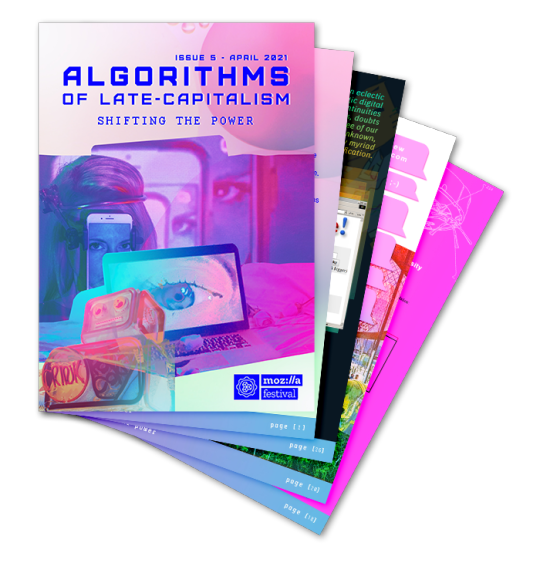
Presenting the fifth issue of the Algorithms of Late-Capitalism zine: "Shifting the Power” 🤖 Digital Edition 🤖 Self-printing Edition ——————————————
In this era of increased reliance on algorithmic systems that we can’t see and don’t control, how do we shift the power back to the citizen? By knowing where, how, and to which effects algorithmic systems influence our lives – we can start finding ways to reconfigure our relationships with the systems pervading our digitizing public sphere. By interrogating and critically examining the underpinnings of these systems, from our unique perspectives, we can shift the power from the pervading technocracies back to the citizens.
—————————————— This zine was created by internet teapot (Karla Zavala and Adriaan Odendaal) and participants of the workshop: “Algorithms of Late-Capitalism: Zine Co-creation Workshop” that took place at the Mozilla Festival on 17 March 2021 * You can sign up for our upcoming board game co-design workshop here *

#zine#zinemaking#zine making#algorithmsoflatecapitalism#algorithmic culture#mozilla#mozfest#mozilla festival#co-creation#co-design#tech#tech zine#digital culture#critical theory#algorithmic literacy
63 notes
·
View notes
Text
Mozfest 2019 writeup: Using IoT to Measure Outdoor Air Quality in Africa
As part of Mozfest 2019, I attended a session in the Openness space called ‘Using IoT to Measure Outdoor Air Quality in Africa’. The session was going to be led by Warukira Theuri who wasn’t able to make it* (for reasons I learned later which I’ll add a note about below).
There were about a dozen of us gathered so in the spirit of Mozfest... we kind of put our own session together on the topic.
This post is to document what was discussed. I take no credit for the topic, and advise anyone interested to follow/contact Warukira who is clearly an amazingly talented and smart young woman.
The session was facilitated using techniques I’ve picked up through my design jam facilitation days. The basic steps are:
Check in - a quick round of introductions for people to say their name, who they are and what they hope to get out of the session
Ideation - individually, everyone has 10 minutes to write down their thoughts on the topic. These could be challenges, questions or general comments
Clustering - what themes arise from people’s notes?
Discussion - normally in a design jam we would want to format the themes into ‘how might we?’ statements to help frame the future prototyping and research.
Discussion part 2 - taking the role of the critic, what are the questions, new provocations, criticisms we can think of?
Ideation - based on the themes that have been identified, what could help address these issues?
Check out - we swap contacts/social media handles and say ‘til next time!’
What themes came up?
As a group we noticed our thoughts and questions could be divided into a couple of core themes:
What standards do we build IoT products to?
Should we look to EU standards?
Questions were raised around ipv6 and general security of devices
Are there lessons from environmental tech for protecting and monitoring endangered wildlife for privacy paradigms? e.g. rhino tracking
How can we ensure quality of data created by IoT devices?
Does it match with quality of other public data assets?
What is the right hardware?
How do we learn to make the hardware?
Are there IoT devices that can boost wireless strength (to help deal with issue of lack of connectivity in rural areas)
Are there any accessible courses to learn how to program for IoT?
A diagram of our ideas mapping can be found here: https://docs.google.com/drawings/d/1U_OVPPGElw0b3F4T0cLANYlDUDEyuFu68nQDxPtqrNA/edit?usp=sharing
Some provocations...
“OK, the air sucks - now what?”
This connected to question about how one turns data into action. Reporting that pollution levels have changed is one thing but is that enough to convince local councils? Is there a social/political organising aspect to support community tech?
Who else is doing this around the world - can we work in solidarity?
What are models of successful activism [informed by data obtained from open source IoT]
IoT will collect data for AI. Where does the responsibility lie?
Any good resources?
We ended the session by sharing potential resources that could help us all address these questions. The resources range from regulatory, to service design practice, to people working on similar projects facing similar obstacles (one thing that came up was that actually the dynamics of local politics and access are very similar whether in East Africa or Western Europe!).
Here is the list we put together:
Papers and research
Global information society watch 2018: Community networks
Community networks: the internet by the people, for the people
Designing Connected Products
Community centred tech
Luftdaten (Berlin)
Internet Society
Afrinic
Web Foundation
Women’s Rights online research
Design
This is Service Design Doing
Decolonising Design
Global Design Jam community
Campaigning
Friends of the Earth, Scotland - FYI, there are global networks so find your nearest one!
Regulatory
European Environmental Agency
Data
52 North wiki - specifically work on specific project called “sensor web”
SOME FURTHER COMMENTS
At a later conversation, I learned that the reason Warukira wasn’t able to make it was due to the “usual” UK government hostile environment idiocy which messed up her visa application.
I intend to write about this in a bit more depth but as someone who has attended Mozfest before and tends to hang out a lot with the folks attending from Kenya, Tanzania and Nigeria, this isn’t unusual. However, what struck me was the attitude of ‘us’, us in a collective sense meaning the hosts, the volunteers etc etc.
To me, the spirit of Mozfest should also be about solidarity as much as it is about people having fun, ‘just getting involved’ and having a can-do DIY attitude. Maybe it would have put the organisers into too much trouble with the authorities, but honestly, I wish more of us attendees and fellow facilitators could also have known about all the amazing people who weren’t able to make it because of the UK governments despicable policies, so that at least we - as the Mozilla family - can show our support and solidarity.
Now as I said, this happens every year and honestly at this rate will keep on happening - it will probably even get worse, so long as the conference remains in Europe, which it will. In the meantime, what those of us with relative privilege can do is to call it out, let our governments and local councillors know that we know what’s going on and that this is NOT OK. As a community, we should be explicitly talking about the fact that our fellow civic technologists are being unfairly treated due to neo-colonial nonsense. At the very least, this repeated issue with visa applications is an important lesson for the younger generation of technologists and academics in countries like the UK, Germany, France, Belgium, Spain, the US, Canada; in countries that are only at the top of the pile because of centuries of colonialism and occupation, to demonstrate why we cannot imagine technology is somehow in an ivory tower that will never be affected by politics.
I’ll stop there because I’m working on a proper article about it, especially now my initial fury has eased so I can talk a bit more thoughtfully about this.
In short, it would have been amazing to meet Warukira in person but I want to say a huge thank you to her for putting in a kick-ass session which provided an opportunity for us to discuss some really fascinating ideas and to learn from each other.
2 notes
·
View notes
Text
Tim Berners-Lee on Solid @ MozFest 2018
New Post has been published on https://www.aneddoticamagazine.com/tim-berners-lee-on-solid-mozfest-2018/
Tim Berners-Lee on Solid @ MozFest 2018

Sir Tim Berners-Lee, who invented the web in 1989, speaks at MozFest 2018. Tim is the founder and director of the World Wide Web Foundation and a professor at Massachusetts Institute of Technology and at Oxford University. He is co-founder and CTO of the newly launched company inrupt, that’s helping to fuel the success of Solid, the technically potent open-source platform built to decentralize the web.
The project aims to radically change the way Web applications work today, resulting in true data ownership as well as improved privacy. https://solid.mit.edu/
MozFest is Mozilla’s seven-day celebration for, by, and about people who love the internet. Learn more: https://mozillafestival.org/
#decentralize the web#Massachusetts Institute of Technology#MozFest#open-source platform#Solid#Tim Berners-Lee#true data ownership#World Wide Web Foundation
0 notes
Text
March: MozFest ambassador update
I joined MozFest earlier this month as a participant, volunteer, and session facilitator. There are always so many creative things happening at MozFest and after logging my volunteer hours and doing some podcast interviews with participants, I felt energized and connected!
The session I co-facilitated was a podcast series to capture the Voices at MozFest. We had an open call to participants, facilitators, space wranglers, volunteers, and youth leaders to share their story. During the week we interviewed 2 facilitators and we have a couple more interviews lined up post MozFest.
As you'll see at the end of this post, it's not too late to join MozFest and and that includes joining the podcast!

In her interview, Tani Olhanoski, co-founder of Mysilio, highlighted creative ways that their software development team uses curiosity, play, and experimentation as a way to prototype and test out their ideas. During MozFest, they created an interactive exquisite corpse game to help attendees explore Web Monetization.

Our interview with Stella Anne Teoh Ming Hui from the Malaysian Philosophy Society was also fascinating as she explored rethinking the implications of the metaverse through philosophy in the Youth & Futures space.
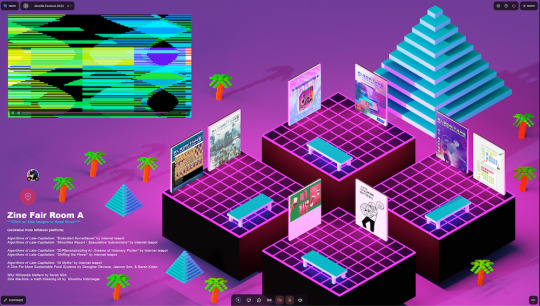
One of the most creative things I experienced at MozFest this year was the Zine Fair. It was set up in a virtual space called Spatial Chat with a DJ spinning chill tunes. You entered this virtual space with your avatar that you could move around to view the zines and connect with other participants and zine authors. I got to meet Khushbu Kshirsagar, creator of the Zine Machine, a really cool paper-based math tinkering kit. I also found Kelly Wagman’s Gender, Power, and Tech zine very powerful!

Other highlights included joining the Opening and Closing Circles and several Dialogues & Debates including Education in a Mixed AI Reality. I am so glad that many of the sessions I missed will be available on demand until June 25. Tickets are still available and still pay-what-you-can, so you too can get inspired by the hundreds of sessions from folks around the world who are passionate about trustworthy AI, internet health, and digital rights!
0 notes
Link
4 Ways To Explore #WebMonetization at #MozFest #MozFest2021
Via @GrantForTheWeb CC @mozillafestival
#DWeb #Firefox #Mozilla
0 notes
Photo



BRIEF: HUMANS OF THE INTERNET
Clients: Mozilla, Storyengine and Loup.
“The StoryEngine team is looking to partner with students at Ravensbourne studying Digital Advertising and Design to promote the “Humans of the Internet” space at MozFest 2017.” - StoryEngine.
MozFest is a convention where students and professionals go to interact with others, to monitor and evaluate projects and to celebrate others work. This year, Mozilla stated that their overall goal was to get the most number of participants interviewing each other. My task was to create a enviroment that encouraged people to get involved in the peer-to-peer interviewing’s while still sticking to the budget as well as promoting the event across the building.
After reviewing the brief and highlighting all the important parts, my first task was to start brainstorming ideas relating back to the “Humans of the internet” concept. Some of the ideas that me and my partner Nathalie came up with where: underwater theme, futuristic theme and a garden theme. We decided upon the garden theme. The reason behind this was to create a calming environment for participants to allow their mind to wander without being distracted. Eden was the name that we decided on as this means paradise and links back to the idea of calming. Above is a mind map that was shown during our pitch that incorporates the many different aspects we decided would be included. Not only this, but reference images were also shown. A materials board, which is shown within the images attatched, was created using a variety of different objects such as: fake grass, fake ivy, wooden board, fake leaves and fairy lights.
Overall, I believe that the client was impressed with our efforts within the pitch.
1 note
·
View note
Photo

http://geekandsundry.com/uks-hacklab-ensures-the-future-of-tabletop-games-and-coding/
With International Tabletop Day around the corner, we’re counting down the days to the big celebration by highlighting friendly local gaming stores, their owners, and their awesome stories. Be sure to find an ITTD event near you so you can enjoy the festivities in your community. All...
#board games#education#Facebook#Hackers#HackLab#international tabletop day#International Tabletop Day 2017#minecraft#mozfest#mozilla festival#tabletop day#tabletop day 2017
16 notes
·
View notes
Photo

Everywhere I go I see unicorns #mozfest (at Ravensbourne University London) https://www.instagram.com/p/BpfE-ctgeE8/?utm_source=ig_tumblr_share&igshid=1djg54d0we2zn
0 notes
Text
Tech Activist: Superhero-in-Training
I had the amazing opportunity to give the Sunday Spotlight talk at #VSTE17 this year. Here’s the transcript.
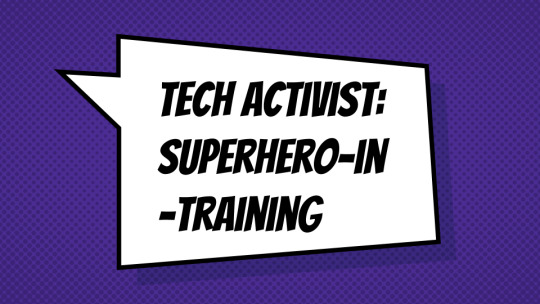
Hello, my name is Kim Wilkens and I’m a tech activist. I wasn’t always a tech activist. I used to just really like tech and I worked in tech, but I didn’t see a need to “fix” anything or advocate for change. Let me tell you a story.
I have always loved tech. It started with the TRS-80 my dad brought home when I was in high school. Sure, the games were fun, but I was never as good as my brother at those. What got me excited was learning BASIC programming and being able to type my papers faster than anybody else I knew. I started college as a math major. I happened to take an intro to computer science course as an elective and I fell in love with being able to take control of a computer and make it do my bidding.
I started working at IBM as a co-op during college and then was hired after graduation. I was a very ambitious young woman and very early in my career I started looking for opportunities to get into management. I was lucky to find a female mentor who took me under her wing and helped get on the first rung of the corporate ladder.
In 1998, I had my son. My grand plan was be back at work after my 6-week leave, but all did not go as planned. Then we moved to Charlottesville, Virginia, I quit my job to stay at home and I became a freelance test and web design consultant.
I feel like I literally stumbled into teaching. My best friend got a gig for me setting up a computer lab at her school, then the principal there encouraged me to teach technology. I’m still not sure why I said yes or why he offered a completely untrained person the job, but I fell in love with my new vocation, especially working with middle school students.
So no, I wasn’t always a tech activist. I used to just really like tech and I worked in tech, but I didn’t see a need to “fix” anything or advocate for change. That was until I went to the Grace Hopper Celebration of Women in Computing conference. Like many of you coming to VSTE, I went there to learn about the latest tools and curricula in technology education to bring back to my school. I did learn about those things, but I also learned about a very disturbing trend in computer science education and technology careers. Can you guess what it was?
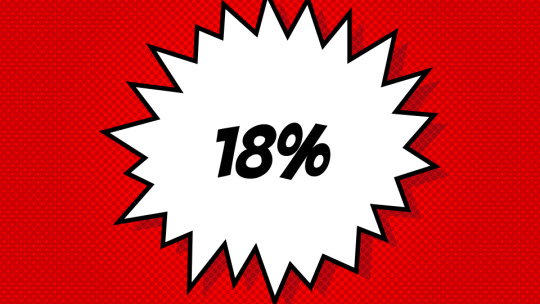
It’s that number right there. That number has haunted me since I heard it. See, I naively thought that things were probably looking up for women in technology. But instead, I learned that when I was in college was the height of women studying computer science – 37%. In 2010, the year I went to that conference, women represented just 18% of computer science graduates! And as if that wasn’t enough, I learned that pay is still unequal and that high-value and high-income jobs in the tech sector are still mostly occupied by men.
It made me so mad and sad and frustrated and I wanted to know what the hell happened. I mean, technology innovations have fundamentally changed the way we work, communicate, govern and educate, yet girls are five times less likely than boys to consider a career in technology. So what did I miss? Let’s rewind and see.
NPR’s Planet Money did a story called When Women Stopped Coding and one thing they found is that having access to these first home computers was a decisive factor in more boys pursuing and excelling at computer science than girls. Maria Klawe, president of Harvey Mudd College and champion for increasing the representation of women in tech, came to a very similar conclusion that she shared at a Grace Hopper conference. She believes that many of the stereotypes we’ve got in computing now came about when PCs found their way into the home and schools. The first games were shooting games because they were the easiest to create with the limited resources of the early PCs. That grabbed male interest and they grabbed the computers. So a big thank you to my dad and brother for not locking me out of that clubhouse!
I started college as a math major, but an encounter with a math professor turned me off that subject. I went in with a problem and was told this was something my whole gender struggled with. Seriously dude, isn’t this 1984? I went to a small liberal arts college, so there weren’t a lot of math professors to choose from. Luckily, I had taken that CS course as an elective and based on that experience I changed my major to computer science.
When I started studying CS, all my professors and most of the students were male. When I started working at IBM, a majority of my co-workers were male. The few women in leadership positions seemed to approach their rise upward like most of the men - looking ahead, but not looking back. Luckily I found a female mentor. Against the advice of the mostly male managers, I left development to work with her in publications (most definitely not seen as a step up). Within 18 months, I became manager of the publications team (younger than all my employees). I soon added some developers to the team and eventually became a release manager responsible for all phases of the product development process for a major product update.
For about a dozen years, I had a thriving career at IBM. After being a release manager, I became a product planner which opened up the world to me as I got to travel all over the place to spread the good word about our product. My final job at IBM was a test manager for the game development division. Yes, it turns out you can earn a living playing video games. However, I was soon to become another troubling statistic about women in tech - that after about 12 years, approximately 50 percent of women leave their jobs in STEM fields—mostly in computing or engineering. Just to put that in perspective, that is twice the quit rate of men leaving tech.
By this point, I finally began to sense that things were not right with the tech world. Here’s what I wrote in my blog when I turned 40: “For several years, I was humming along quite nicely in my feminist cause, but then I had a child, left corporate America, turned 40 and had a huge identity crisis. I had done well in a man's world, but now I found myself in the world of motherhood. How was I supposed to excel at something I had no training for? What was happening to my feminist agenda? I thought I was helping to pave the way for the women after me to be treated as equals, but instead I was just playing by the rules of corporate America and they no longer seemed adequate for my life. I felt like a rebel without a clue.”
Needless to say, what I learned at the Grace Hopper Celebration of Women in Computing Conference really rocked my world! If you are familiar with the Hero’s Journey, this was definitely my “call to adventure” moment! At this point, I could refuse the call or become a reluctant hero.
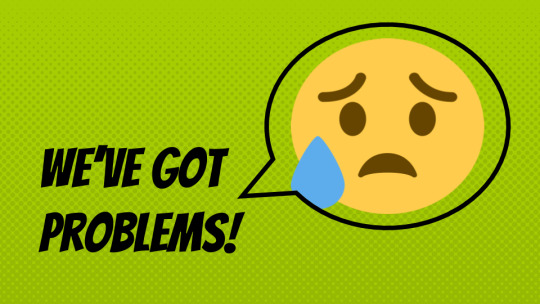
So that’s the beginning of my story, but I wonder what your story is or what your students stories are? Where are we all on our hero’s journey?
Because, let’s face it, there’s no shortage of problems that need solving. And I believe those solutions will largely involve some sort of technology.
This past October, I went on my third pilgrimage to MozFest in London. MozFest is an annual “tech” conference that Mozilla puts on, but it’s really hard to describe because it’s different that any other tech conference I have ever been to. This year it was a space where internet health issues and the larger implications for society were not only acknowledged, but actively being addressed by a diverse, committed and growing group of people. There are 5 key components of internet health that Mozilla is working on and there’s some good news and some bad news:
Privacy & Security: The Internet only stays healthy if we trust it as a safe place – to explore, transact, connect, and create. Our privacy and security online is under constant threat.
Good news: Hundreds of millions of people are taking charge of their personal Web experience by installing ad-blockers.
Bad news: 91% of adults agree that consumers have lost control of how personal information is collected and used by companies.
Openness: The Internet was built on the promise that any one of us might create the next big thing. But in order to keep creating, imagining, and reinventing our future online, the building blocks of the Web must be open to all.
Good news: There are now an estimated 1 billion Creative Commons-licensed works online that encourage reuse, including texts, photos, and music.
Bad news: People are getting cut off from other viewpoints because of the digital bubble they are living in.
Decentralization: The Internet owes much of its success to openness: its open, shared structure has made it easy for everyone to build, surf, and thrive on it. But a few big companies are closing in, closing doors, and creating walled gardens that concentrate their ownership and control of the Web.
Good news: As of December 2016, 47 countries currently have laws in place to protect Net Neutrality.
Bad news: On December 14, the FCC will vote to replace current rules enforcing Net Neutrality.
Digital Inclusion: The more voices, perspective, languages, and people contributing to the Web, the richer the experience for everyone. But the whole Internet is not yet accessible, welcoming, and safe for all.
Good news: Wikipedia continues to be a free fountain of knowledge to the tune of 16 billion pageviews a month in 284 languages.
Bad news: 73% of Internet users have seen someone harassed online and 40% have personally experienced it.
Web Literacy: People everywhere should have the knowledge they need to tap into the full power of the Internet – and use it to make their lives and the world better. This means everyone needs to be able to read, write, and participate online.
Good news: The growing trend towards integrating coding into the core curriculum across the U.S.
Bad news: 82% of American middle-schoolers assessed couldn’t tell the difference between an ad labeled “sponsored content” and a real news story on a website.
That’s just tech-related problems. What about all the other problems? Addressing climate change, equal access to education, eradicating poverty. We live in a world with a lot of problems, but we also live in a time with powerful technology tools to help us create solutions. As technology educators, we possess a superpower, the ability to inspire the next generation in technology.
“With great power comes great responsibility”. That may be a line from a comic book superhero’s uncle, but it’s no less true in reality. How do we super empower students and teachers to tackle these real-world problems and wield their technology powers for good? I’ll share some things I’ve learned as a superhero-in-training working with students and teachers at St. Anne’s-Belfield school, Tech-Girls and beyond.
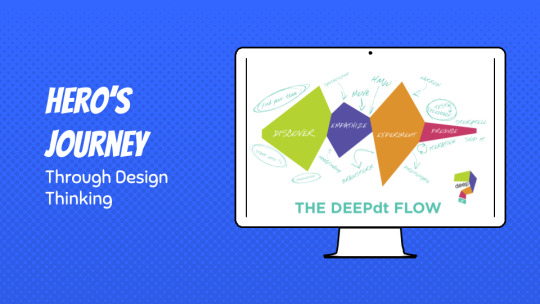
First, I want to share a framework that has been super helpful on my journey. It’s the Design Thinking process. It’s a way of looking at problems from the point of view of those it affects and iterating on solutions. I first learned about the Design Thinking alongside high school students in the Bio-Med Tech-Girls program. More on that story later. First, what is design thinking?
As I was preparing for VSTE, a colleague shared a version of the Design Thinking process created by the Mount Vernon Institute for Innovation specifically for use by K-12 educators and students. I am going to use it to weave the rest of my story and I hope you will consider how you can use it in yours.
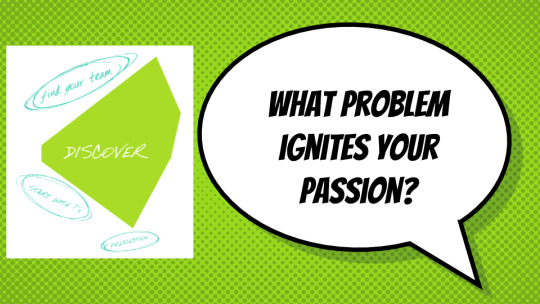
The first step is discovery.
This is the stage of researching, observing and immersing yourself in your environment. Looking for what’s not quite right? What problem catches your eye?
For instance, once I learned about the gender gap problem in tech, I couldn’t stop thinking about it. In fact, my family will tell you I became kind of obsessed with it. I would talk with: family, friends, colleagues, teachers, students, strangers on twitter, pretty much anywhere and with anyone who would listen to me. When I went to get my Master’s in Education, I bent any project I could toward studying this problem. I discovered so many things.
What’s the problem?
So I’m wondering what problem is haunting you? Maybe it’s something you are already working on or passionate about or maybe it’s been a thought lurking in the back of your mind. Whatever it is, it may seem too big, too overwhelming to even think about solving. We’re going to need some superpowers.
What are your superpowers?
After a lot of research & a lot of talking to people in the community & a lot of soul searching, I founded Tech-Girls in 2012 with a mission to empower girls to imagine and achieve their future dreams in our tech-savvy world.
In 2013, I went back to the Grace Hopper conference to learn and re-connect. At the conference, I had the opportunity to hear Anita Jones speak. Wow - was I blown away! I learned that she is a computer science legend who broke glass ceilings in academia, government and corporate America. When I got the opportunity to meet her in person, I just blurted out to her that I wanted to help solve the gender gap problem and had started Tech-Girls to do just that. She called me audacious.
I can’t tell you how empowering it was to hear that from one of my new heroes. As a part-time student, part-time teacher and full-time mother, I wasn’t feeling very audacious, but as the founder of Tech-Girls, I could do that! I decided audacity would be one of my superpowers.
I also figured out pretty quickly that making change happen involves a lot of stepping outside my comfort zone - you know, like sharing my story in front of hundreds of people. It turns out I have this really fantastic out of my comfort zone detector and when it goes off, it freaks me out! This I have discovered is another superpower. It’s the not so subtle way that one part of my brain tells me, ‘hey that sounds super scary’ and the other part says ‘so, you should probably go for it’.
If you are like me, you may not think you possess superpowers and sometimes they sure aren’t obvious. So I tried an experiment. I crowdsourced a list of superpowers at VSTE. I tweeted out requests to think about someone you look up to and share the qualities that you admire about them on a padlet. My hope is that we can use this list to acknowledge the superpowers we see in each other. Looking at it also reminds me that we’ve all got potential superpowers within our grasp, but also that we can’t possibly do this superhero stuff alone. We need a team.
Who is on your team?
To solve big hairy problems, going it alone just isn’t possible. When I started thinking seriously about founding Tech-Girls, I wrote a blog post about my idea and tweeted it out far and wide, tagging other girl-focused organizations to get their expert opinions. Through that I got support and connections with Black Girls Code, Girl Develop It, ChickTech, CyberJutsu Girls and Geek Gurl Diaries. Ironically, it was also through social media that I made some connections in Charlottesville who were interested in helping out.
I met the first member of the Tech-Girls team on a 10-miler training run - see I told you I was totally serious about sharing this problem with anyone who would listen. She was a high school junior and joined up right away. With her help, I was able to connect to a teacher who opened the door for us to host meetups at her school. Finding and engaging supporters, collaborators and cheerleaders became a critical component to making Tech-Girls work.
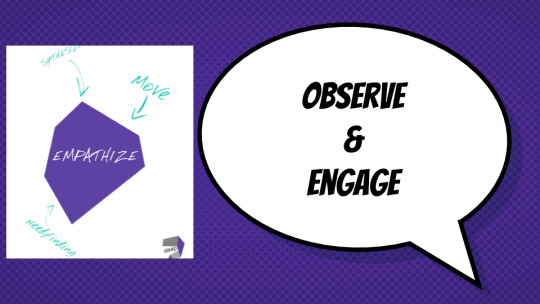
The next phase of the Design Thinking process is to empathize - to walk that mile in someone else’s shoes. I didn’t know about the Design Thinking process when I first started Tech-Girls, but I did know that I needed to understand what the problem was from the girls’ point of view. I started looking for opportunities to connect with girls and learn from them. I asked the girls what they thought the problem was and I heard things like:
there’s a lot of peer pressure to be cool & computer science is not seen as cool
computer science sounds complicated & boring
there are so many bad stereotypes out there, like showing interest in computer science means you have “no life”
I also asked them what alternate realities in their world would help address the problem:
we need to show more female role models in technology
help them understand computing is more about people than about computers
associate computer science with positive and fun subjects
This feedback was invaluable in creating programming for Tech-Girls.
In 2014, the perfect job found me - K-8 Computer Science Program Coordinator at St. Anne’s-Belfield School. Even though I was full steam ahead with Tech-Girls, I just couldn’t pass up this opportunity because I believed it would be a “proof of concept” of another avenue to help solve the gender gap problem. I just had 2 requests before signing on: Tech-Girls would still be a priority for me & we would share everything we learned on our journey integrating CS into the classroom.
A research study from the Girl Scouts reported that although 74% of teen girls are interested in STEM subjects, they don’t pursue this interest for 3 reasons:
They don’t believe other girls their age are interested in a career in STEM
They are uncomfortable being the only girl in a group or class.
They feel they have to work harder than their male counterparts to be taking seriously.
If everyone in a class is exposed to computer science, then they are all empowered to move from being technology consumers, to technology creators, collaborators and activists.
My job is to integrate computer science into all the K-8 classrooms, but I knew from previous experience, that asking a teacher if I could bring CS into a project or lesson, was asking them to take a risk. I have found that if the idea of incorporating new technology into the curriculum is anxiety inducing for an educator, add computer science to the equation and the fear factor seems to amp up ten-fold. The fear of change and not being able to keep up in the midst of rapid and rampant technological advancement is very real.
Educators are dealing with paradigm shifts brought on by technology use inside and outside the classroom. Meanwhile, youth continue to find new and inventive ways to engage with technology with or without our guidance. Acknowledging this fear and the need to work within the unknown is key. Sometimes I need a good quote to guide me through my fear. This has been my go to inspiration this past year.
“You do not need to know precisely what is happening, or exactly where it is all going. What you need is to recognize the possibilities and challenges offered by the present moment, and to embrace them with courage, faith and hope.” ~ Thomas Merton
I mentioned I went to MozFest this past October, but in 2016, I had the amazing opportunity to help plan the Web Literacy space at MozFest. Stepping into this role was definitely stepping out of my comfort zone, but I used my handy dandy comfort zone detector superpower to turn my first reaction of fear of the unknown into a sign that this new thing is exactly what I was supposed to do. I also knew that I was not on this journey alone. Being part of the Mozilla Learning Network and #teachtheweb movement has been such an amazing experience. It’s a community that cares deeply about empowering people of all ages to learn “the most important skills of our age: the ability to read, write and participate in our digital world.” Who wouldn’t want to be part of that?
I attended a planning retreat in Berlin with all these amazing superhero-type people. I found the whole experience to be a time of embracing paradox. I felt tension between hurrying up to get things done and slowing down to fully appreciate the experience; finding opportunities to collaborate and finding time to be alone; taking in new ideas and standing firm on my ideals; wanting to share my ideas with the group and not daring to let my ignorance show. The result was that out of my comfort zone feeling that is both scary and exhilarating, daunting and awesome.
Learning is also a paradox. I think this is especially true when we are talking about learning tech. Anyone in tech knows there is no keeping up with all the changes and yet, we’ve got to continue learning in order to keep creating it. As a teacher of computer science, I know that when I introduce a new tool or concept, I will not have all the answers to the questions and problems the students will encounter. In fact, the more tech I teach students, the more I become a learner alongside them. The space we created at MozFest reflected this paradox of learning and invited everyone in to embrace it.
Here’s the description of the space we created: Demystify the Web! Grab your ticket to our carnival of learning! All who enter will gain the most important skills of our age: the ability to read, write and participate in our digital world. Mozilla Learning invites teachers and learners of all ages to join our funhouse of web literacy. Embrace the unknown! Experience the thrills! Imagine and share the full potential of the web with everyone.
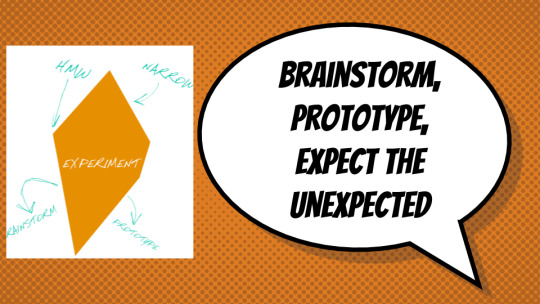
The next phase of the Design Thinking process is to experiment. As I said before, my first experience with Design Thinking was through the Bio-Med Tech-Girls program. This is a week-long collaboration between Tech-Girls, the Biomedical Engineering Department at UVA and St. Anne’s-Belfield School. This program grew out of one of my failed experiments. I had submitted a Tech-Girls proposal to the i.Lab at UVA, a startup incubator for UVA students and community members. I wanted to create web storefront of STEM curricula, workshops and services geared toward girls. My application was rejected, but one of the reviewers, David Chen, remembered my idea. David is the Coulter Program Director at UVA BME and at a chance meeting, he said he wanted to collaborate with Tech-Girls.
This past summer we held the 4th annual Bio-Med Tech-Girls program. We had 15 young women participating from 8 schools around the region. They had a broad array of interests coming into the program including math, science, engineering, biology, nursing, robotics and coding. During the program, participants got hands-on with creating technology, behind-the-scenes lab tours at UVA Biomedical Engineering and inspiration from guest speakers. They also solved a real-world problem through a design challenge like improving life for an amputee or someone with cerebral palsy.
On Friday afternoon, the community is invited to see what the girls created and it is truly inspiring to see what they come up with in such a short time-frame. The design challenge is also a highlight for the girls. A couple of pieces of feedback that first year really stood out to me:
I've never done anything like it before. All of the other engineering things I've been to always showed us other people's projects, but never got to offer us an opportunity to do a project ourselves.
You gave us a real problem and expected us to come up with a good solution, and even have us build a prototype. Normally adults don't understand younger people are able to do this stuff.
My experience learning about the design thinking process with the girls and seeing how much of an impact it made on them had me thinking that I needed to bring this experience to students at St. Anne’s. The thing about Design Thinking is that you are really putting the learning in the hands of the students and none of you really know where it’s going to end up. I knew just the teacher who would take a leap of faith with me - 8th grade science teacher Tom Weis. Together, we created the Design Thinking & Robotics project.
For this type of assignment, it’s important to identify the design constraints of the project. We brought in robotics with the Hummingbird Robotics kit which I discovered at VSTE several years ago. It’s an amazingly versatile platform that lets you build up creations around robotic components. Wo also borrowed the cerebral palsy patient profile work from Bio-Med Tech-Girls.
We kicked off day one by introducing teams of students to the Hummingbird Robotics kit in what I like to call “hole in the wall learning”. Inspired by Sugata Mitra’s “Hole in the wall” project, the idea is to get students hands-on with the kit as soon as possible and let them figure out how to test the lights, servos, motors and sensors. We gave them handouts on connecting electronics and programming them, but mostly this was a trial and error activity.
Next was working on empathy. Typically, you gain empathy for your patient by getting to know them...BUT what if you can’t interact with your patient? You can gain empathy by trying to step into the shoes of someone with cerebral palsy, so we gave them a homework assignment to try out everyday activities with limited use of their arms. Together, we reflected on the homework experience recording results on an empathy map. Next we had teams researching problems like the one their patient was experiencing. Could they find videos that show what challenges their patient might be facing? Could they find information about what solutions exist today?
Next students created need statements based on the problems their patient was facing. Each team picked one need statement to take to the next stage of brainstorming. During this stage, no idea is too crazy and the more ideas the better. Each team member come up with at least 5 ideas independently. After all ideas were on the table, teams worked to narrow them down and eventually pick one solution to take to prototype stage. Before they began to prototype, they had to draw out a design that included materials they needed as well as a description of how the solution would work.
Finally, we dumped a bunch of maker materials into the middle of the room and they got to work prototyping, testing and refining.
What they ended up with and presented on day 7 of the project was kind of amazing. Here are some examples.

The final step is to produce something, so that you can get feedback to make it better. One thing that David Chen always stresses with the Design Thinking process is that you’ve got to try out your ideas and get feedback. He’ll often have the Bio-Med Tech-Girls in the hallways at UVA trying out their ideas and asking for feedback from people they run into.
With Tech-Girls, I started out by organizing meetups for middle school girls. Those first months, I was lucky to get 6 girls in a room. It felt very slow going. In 2013, I found out about an event that Paula White was hosting called Girls’ Geek Day. Since this was right up my alley, I volunteered. That first event had 30 girls with 15 volunteers offering a wide variety of STEM-related activities. Based on my previous Tech-Girls experiences, I knew this format was a winner.
I joined Paula as a co-conspirator and we have seen Girls’ Geek Day grow with feedback and collaboration from the girls, parents and volunteers. Girls’ Geek Days are hosted once a month in elementary schools across the community. They are usually attended by 50 to 70 girls with 20+ community volunteers running activities each session. You can learn more about this program and ideas on how you might recreate in your community at our session on Monday.
One of the projects I’ve worked on that I think best represents testing and iterating on an idea is the SPARK! Hackathon. It is also a great example of super empowering kids and learning. Zach Minster, the 9-12 Computer Science Coordinator and I started the SPARK! Hackathon as a way to share the enthusiasm we have found in students who discover computer science & coding with the thriving tech community in Charlottesville. What we discovered during the planning and running of the event is that students are eager for opportunities to collaborate with others and work on meaningful projects while the tech community is eager to hear their ideas and help them create.
The hackathon happens over a weekend in January and we invite high school students from around the region to participate - no previous experience required. We call Saturday, a “learnathon” and we recruit tech professionals to come in and teach workshops throughout the day. Here are some of the workshop selections from last year: Cities that Talk, Intro to GitHub, Social Media for Entrepreneurs, Mobile Apps, Project Management, Intro to coding for the web and many more.
Saturday evening, four sponsor companies present real-world problems and the students self-select into teams to solve them. Last year the focus was on IoT (the internet of things) and problem statements included finding ways to use IoT to track patient health, using wearables to stop being distracted by your phone and helping people with multiple sclerosis manage their social interactions. Here’s a behind-the-scenes video from our first hackathon.
What I remember most clearly from that first hackathon experience was the moment we really handed it over to the students. We had recruited volunteers, organized the workshops, got companies on board to present problems, but at 6pm on Saturday after hearing the problem presentations, we truly turned it over to them. It was scary and exhilarating, daunting and awesome.
We are working on the 3rd annual SPARK! Hackathon. I really believe it is student-driven learning at it’s best! Last year, we brought students on board as mentors. This year, we’re excited to have students as collaborators in the planning and design process. They are helping us make the invitation as inviting a possible. The hackathon is open to high school students anywhere in the state, so please consider this your invitation for you and your students to join us January 27 & 28!
I realize that just doing it isn’t as easy as it sounds, but we are constantly asking this of our students, so modeling it is important. That’s why we wanted to take the SPARK! Hackathon experience and bring it to educators. So this summer, St. Anne’s hosted the Computer Science Institute for regional educators. If educators were willing to take a risk on this experience, we promised them 3 things:
an opportunity to learn and get hands on with new computer science skills and tools;
to come away from the experience with a lesson plan infused with CS to try out in their classroom
to connect with a community of educators who can provide support and guidance on their journey into computer science integration.
Our keynote speaker was Jeffrey Spies, the CTO of the Center for Open Science. Our theme was learning to learn and he was so spot on in his remarks, it actually gave me chills. He challenged us to rethink the frustration of failure.
His mantra is "Learning is frustrating. Frustration is expected. Everyone feels this way." He went on to share that “women and underrepresented minorities will face different challenges than others. They may interpret frustration more negatively.” Instead of viewing frustration with tech as a cue that we are 'not good at it’, we need to understand that it is just a normal part of the learning process. As learners, we need to fearlessly embrace the frustration of failure and believe in our ability to learn from it. This is known as a growth mindset and it leads to a lifelong love to learning in any field.
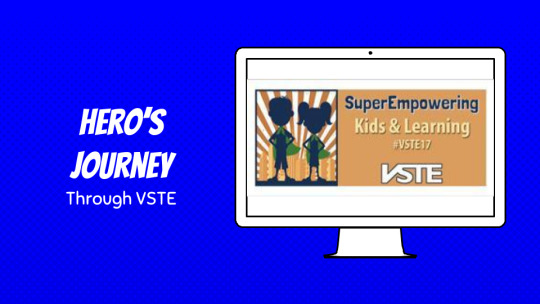
We live in a world with a lot of problems, but we also live in a time with powerful technology tools to help us create solutions. As technology educators, we possess a superpower, the ability to inspire the next generation in technology.
What I learned at the Grace Hopper Conference really rocked my world! It sent me on a journey of discovery, observation, experimentation and iteration!
I hope something rocks your world at VSTE - whether it’s an amazing educator, a cool tool or a problem that needs solving.
Embrace your hero’s journey! Acknowledge your superpower! Find your team! And then start telling your story - I can’t wait to hear it!
Resources & Credits:
Full slidedeck
Mozilla Internet Health Report
Mount Vernon Institute for Innovation: Design Thinking
Bio-Med Tech-Girls
Generation STEM: What girls say about science, technology, engineering and math (Girl Scouts)
Design Thinking & Robotics
Girls’ Geek Day
SPARK! Hackathon
CS Institute
Presentation template by SlidesCarnival
0 notes
Photo

Wild wood festival canapés display beetroot salmon gravalax and fresh horseradish . #mozfest #openingnight #foodies #foodporn #cheflife #eventsprofsuk . . . . #liveauthentic #foodbeast #eeeeeats #eatfamous #londoncaterer #dailyfoodfeed #eventsprofsuk #lifeandthyme #digitalnomad #pr0ject_uno #ig_bestshots #streetframe #thegraphicspr0ject #illestgrammers #colortheory #conceptualart #weeditit #gramslayers #creartmood #streetshots #thisislondon #shutup_london #london_only #unlimitedlondon #londoncalling #londoncollective #iphoneography #entrepreneur (at The O2)
#iphoneography#eatfamous#londoncalling#gramslayers#foodbeast#mozfest#ig_bestshots#creartmood#digitalnomad#londoncollective#london_only#thisislondon#eventsprofsuk#conceptualart#illestgrammers#pr0ject_uno#eeeeeats#dailyfoodfeed#shutup_london#londoncaterer#streetframe#openingnight#unlimitedlondon#colortheory#foodporn#liveauthentic#cheflife#streetshots#weeditit#entrepreneur
0 notes
Text

For Mozfest 2018, I decided to go a little deeper on the topic of smart cities. The first workshop I ever facilitated there had been on the topic of pervasive computing which has many intersections with smart cities but now I wanted to explore some of the outcomes a bit further.
I am still a bit obsessed with this whole question of approaches to designing complex systems and design jams allow me to explore that. Plus it means I get to better understand the issues that come up with collaborative approaches instead of… just lecturing people.
Description
The session will be structured as a design jam where participants go through the user centred creation process to prototype features for (or even an entire) smart city which puts intersectionality at the heart of its digital and physical architecture.
Combining methods inspired by critical design and community centred practice and traditional Igbo masquerade (mmanwu) performance, we will start by ideating based on not only issues but also existing solutions we see in our own contexts, then perform light ethnography amongst fellow Mozfest attendees and the local community before getting down to prototyping our solutions through cardboard, code and post-its!
Following an iterative design and test process, we will end up with prototypes of a human+environment centred smart city.
Outcomes
There is always something cool that happens with a design jam. As a method I’m always aware of and trying to mitigate their accessibility limitations, and its the range of amazing things that come out which encourages me to make them as easy as possible to do for everyone.
One of the really in depth outcomes was this prototype of a self sustaining living unit, the idea being that these would be the units of a truly just smart city because one of the things that’s needed to be self-sustaining is… community. The goal here isn’t to encourage people to sequester themselves away, but instead to design to enable people to share their goods as they might wish to.
There were lots of other outcomes which I’ll go into in more depth. I think the best way of approaching this is to combine learnings from all these type of workshops into some systems maps and a prototyping strategy that can be interrogated further.
Thoughts
I’ve pretty much made it my mission to attend every single Mozfest in some capacity. Whether as volunteer or workshop facilitator, you will definitely find me there having a blast, half-attending as many sessions as I possibly can and eagerly taking notes.
Now some caveats – I will be the first to say that the setup is hideously unaccessible. if you have autism, find crowds too much are physically disabled… yes getting around and understanding the space is flat out unpleasant. I am fairly neurotypical and there have been times where I just don’t do anything because it’s too much. Part of why I want to volunteer is to do my part in making it just a bit more manageable for folks.
Another reason is to keep advocating for Mozfest to go to Africa. Every year it’s predominantly African speakers who have issues getting visas to come to the UK, when we know it’s so much easier for UK/American speakers to go to Africa. A distributed Mozfest would be a great challenge for Mozilla to live up to its name on creating a web that is for everyone.
Anyway
Mozfest 2018: The co-designed city; building smart cities with embedded social justice For Mozfest 2018, I decided to go a little deeper on the topic of smart cities. The first workshop I ever facilitated there had been on the topic of pervasive computing which has many intersections with smart cities but now I wanted to explore some of the outcomes a bit further.
0 notes
Photo

#mozfest Found it if you r a brilliant https://www.fiverr.com/tanjir001/make-eye-catching-t-shirt-design-i-am-excellent-in-it?funnel=2e64212b-a668-4a42-a721-f640bb9ba2b6
0 notes
Video
vimeo
0 notes
